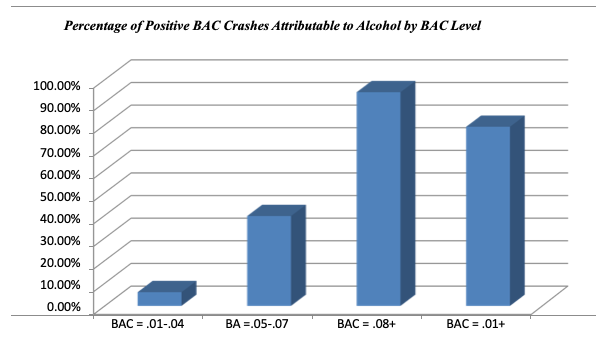
When Will Drunk-Driving Detection Be Mandated on Light Vehicles?
Mandatory technology that promises to curtail the carnage on the highway wrought by drunk and otherwise impaired drivers is on its way. Advanced drunk driving prevention technology (ADDPT) is the umbrella term that covers the work that’s been going on for years to leverage advanced technologies to develop devices designed to stop drunk drivers in their tracks.
This effort is now expected to pick up steam thanks to legislation passed by the U.S. Congress that will require light-vehicle manufacturers to develop and factory-install passive ADDPT devices in new passenger vehicles. The facilitating legislation for this rulemaking is a provision – Section 24220 – within the trillion-dollar Infrastructure Investment and Jobs Act, which was signed into law by President Biden in November 2021.
However, how quickly that comes to pass will depend on how quickly the wheels of the federal rulemaking machine turn. On paper at least, the congressional mandate requires the National Highway Traffic Safety Administration (NHTSA) to issue a final rule prescribing a new Federal Motor Vehicle Safety Standard (FMVSS) that will require passenger motor vehicles to be equipped with advanced drunk- and impaired-driving prevention technology by a certain date.
The Timeline
Specifically, Congress wants that final rule issued by November 15, 2024, with installation of such prevention systems in new light vehicles to begin two to three years later. That means mandated ADDPT systems won’t be seen in cars and SUVs – or, presumably, light-duty pickups and vans – until at least 2026 or 2027.
But the mandate could kick in much later. The legislation allows NHTSA to extend its deadline by three years, but it must provide an annual status report to Congress during that period. And if a standard is not finalized within 10 years, NHTSA must file a report with Congress.
Regardless of the final timeline, per the infrastructure legislation, the resulting new FMVSS will spell out that the devices must “passively monitor a motor vehicle driver’s performance to accurately detect if the driver may be impaired.” The mandate also states that these devices should deter drivers whether they are impaired by alcohol, inattention or drowsiness.
The Driving Factor
Why this rule now? The answer is simple: It appears that the decades-long push by safety advocates – especially Mothers Against Drunk Driving – and ordinary citizens to curb impaired driving is now lining up with technological advances capable of preventing impaired drivers from even starting their vehicles.
Consider that in 2019, the total economic cost of motor vehicle crashes in the U.S. was $340 billion. This represents the economic costs for 36,500 fatalities, 4.5 million nonfatal injuries and 23 million damaged vehicles, according to a report issued by NHTSA in February (see https://crashstats.nhtsa.dot.gov/api/public/viewpublication/813403).
What’s more, the agency found that drunk driving alone was responsible for nearly 40% of the crash fatalities that year: “Alcohol-involved crashes resulted in 14,219 fatalities, 497,000 nonfatal injuries, and $68.9 billion in economic costs in 2019, accounting for 20 percent of all crash costs.”

Some Painful Facts
Among other findings, the report also states that:
1. Drinking more alcohol makes matters worse. “Crashes involving drivers or nonoccupants with blood alcohol concentrations (BAC) of .08 grams per deciliter (g/dL) or higher (the legal definition of impairment in all States except Utah, which is .05 g/dL) accounted for 84 percent of the total economic cost of all alcohol-involved crashes.”
2. The worse the accident, the more likely alcohol was the cause. “The impact of alcohol involvement increases with injury severity. Alcohol-involved crashes accounted for 14 percent of property-damage-only crash costs, 18 percent of nonfatal injury crash costs, and 39 percent of fatal injury crash costs.”
3. The statistics are grim. “Crashes in which alcohol was the cause resulted in 11,921 fatalities, 378,000 nonfatal injuries, and $57 billion in economic costs. This is approximately 84 percent of the alcohol-related fatalities and 82 percent of alcohol-related economic costs. It represents 33 percent of all fatalities and 17 percent of all costs from motor vehicle crashes.”
The agency’s separate progress report to Congress (see www.nhtsa.gov/sites/nhtsa.gov/files/2023-07/Report-to-Congress-Advanced-Impaired-Driving-Prevention-Technology_07-17-23.pdf), filed in July, relays the current status of the rulemaking. NHTSA stated that it is “working to publish an Advance Notice of Proposed Rulemaking (ANPRM) by the end of 2023.” The agency also stated that it “plans to determine next steps after reviewing the public comments received to the ANPRM.”
As to staying ahead of any issues that could lead to delays, NHTSA said it is working “expeditiously to gather data and information related to the mandated requirement … and will rely on robust public input and close stakeholder engagement to identify and/or validate the underlying factors associated with open questions.”
Until this mandate is in place and enforced, and likely even after the technology is operational, the statistics clearly display that fleet operators must be hypervigilant, put in place anti-impairment company safety policies, and be willing to contact law enforcement and to take away the keys.
Per NHTSA, additional information regarding the ADDPT rulemaking (RIN: 2127-AM50) is available at www.reginfo.gov.
About the Author: David Cullen is an award-winning journalist who specializes in covering the trucking industry. Based in Connecticut, he writes for several business publications.

